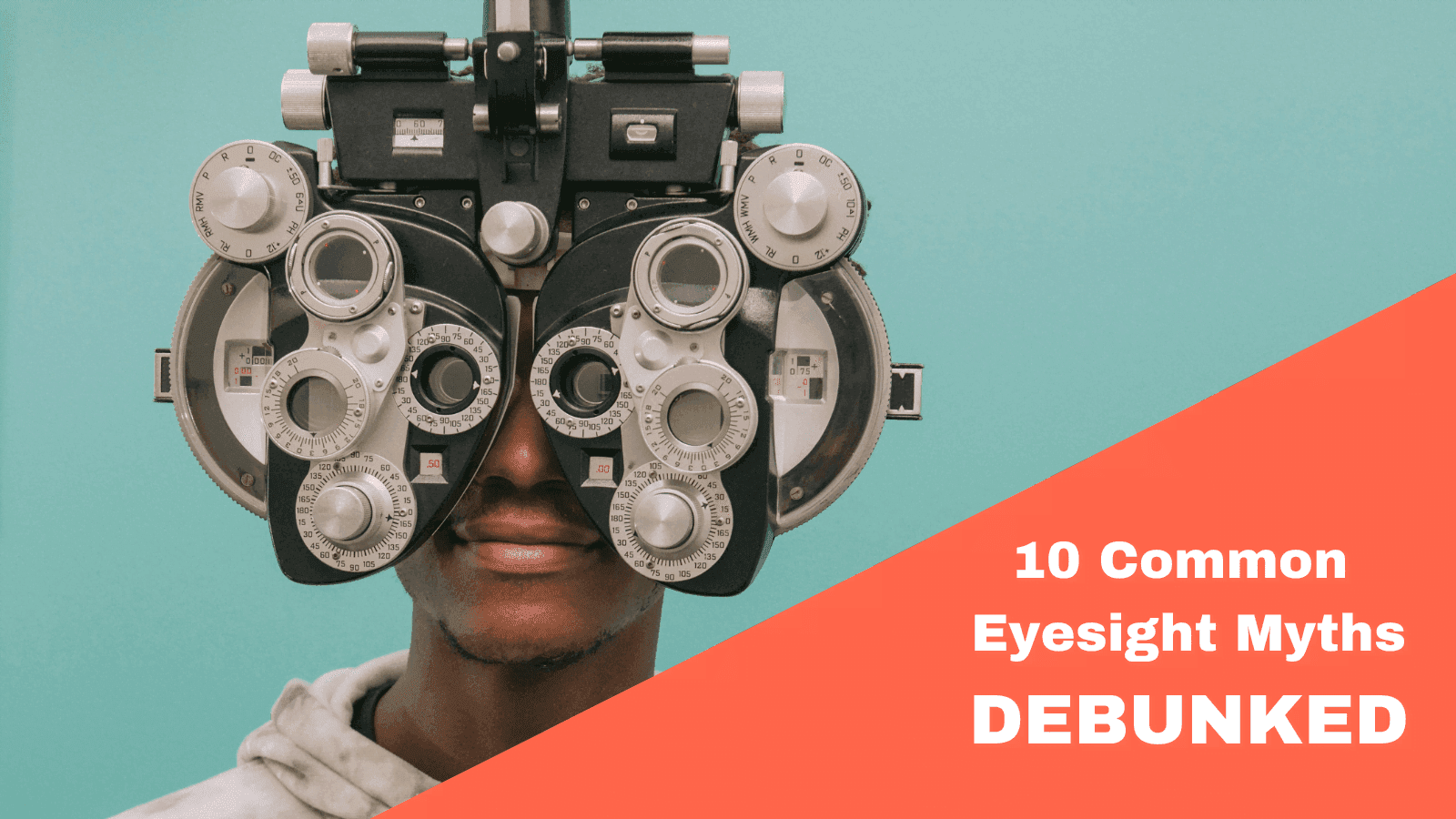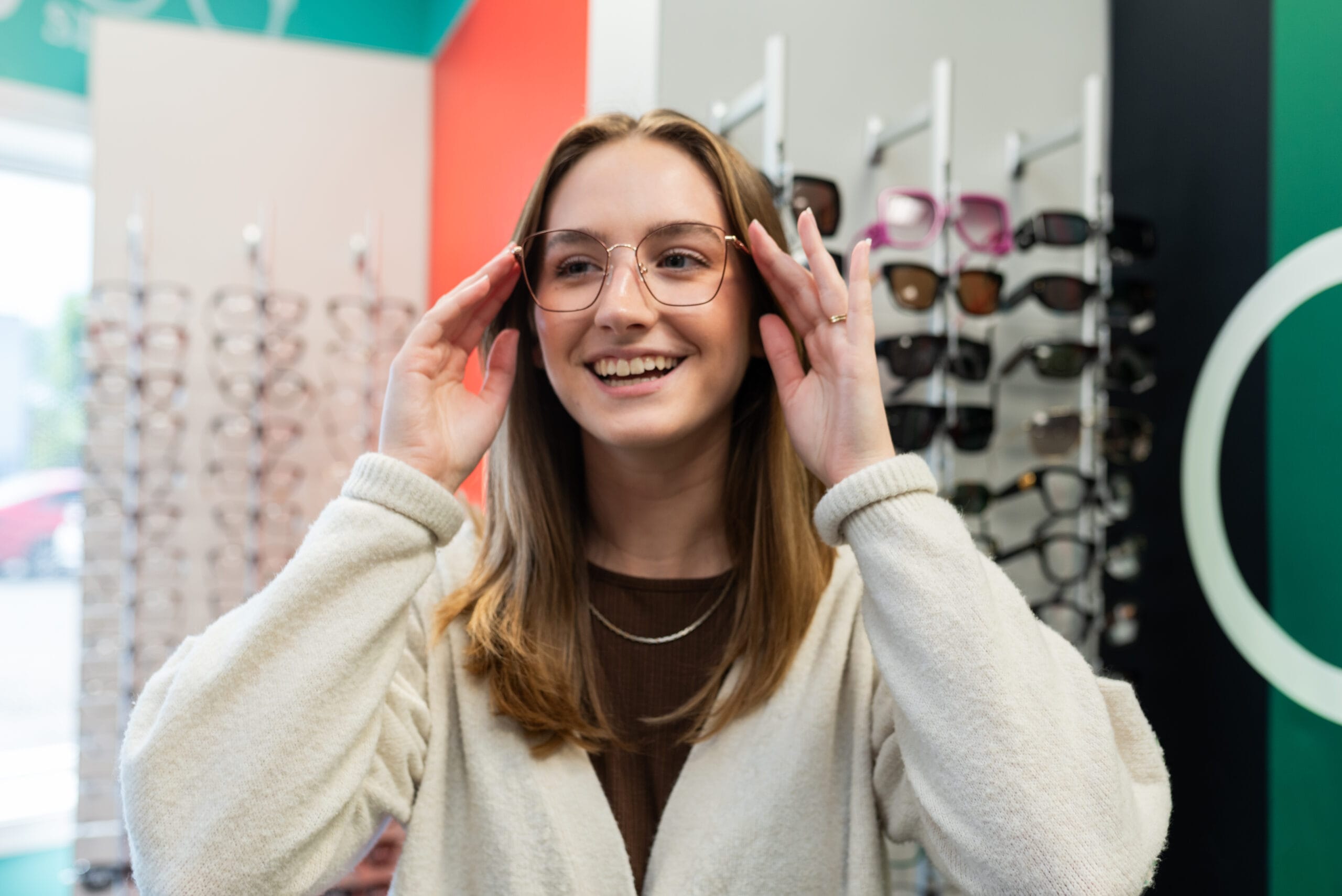 Dr. Judy Walrath, OD
Dr. Judy Walrath, ODIt’s likely that you’ve probably heard a myth or two related to your eye health, and you’re not alone! We gathered 10 common eye myths we’ve heard over the years and had our own Dr. Judy Walrath, OD weigh in to debunk them and shed some light on some good eye care practices.
Myth: My over the counter readers work fine. I don’t need to have an eye exam.
Fact: Over the Counter (OTC) glasses, typically called “readers” may seem to be doing fine for your vision, but it doesn’t replace getting the health of your eyes checked. Glaucoma, bleeding from diabetes, macular degeneration, corneal dystrophies, etc. can all be revealed with an examination of the back of the eye, the retina, and the front surface, cornea. None of these may initially affect your vision, at all, but will if undiagnosed and untreated.
Also, these glasses will not harm your vision, but they most likely won’t help your vision function at its highest level. Often the prescription in the two eyes is different or has a little bit of astigmatism we can fine-tune with a prescription pair of glasses.
Myth: Colorblindness means you can’t see any color.
Fact: Color blindness should really be referred to as color deficient. People who have a color deficiency see color, they just don’t see colors as we see them. It takes 3 different cones in the eye to produce the range of color we see as humans. Different animals see different wavelengths of color. Bees, for example, can see ultraviolet. If you only have 2 of the 3 cones as a human you will be color deficient. The most common form of colorblindness is red-green colorblindness, where people have trouble distinguishing the difference between red and green hues, but other kinds also exist.
You can learn more about different types of colorblindness and what causes it in our colorblindness blog.
Myth: Reading in low light is bad for your vision.
Fact: Reading in low light can cause strain, but no permanent damage. The rule of thumb for digital devices is to match the brightness of the screen with the ambient light in the room. You don’t want a really bright screen in a dark room or a really dim screen in a bright room. For print materials having good light on your reading material makes it easier to see without as much work on the eyes. Overall its recommended to read with good lighting, but you won’t go blind from reading in the dark. You may just struggle a bit or give yourself a headache.
Myth: Astigmatism is a disease.
Fact: Astigmatism is an irregular curvature of the cornea or lens which causes light to refract improperly. While the word “astigmatism” may sound scary, it is a common condition and easily treatable. According to the CDC, astigmatism occurs in about one out of every three people in the United States.
Myth: Wearing glasses weakens your eyes, making you dependent on them.
Fact: The reason you become nearsighted or farsighted and/or have astigmatism has to do with the shape of your eye. Glasses can’t correct the shape. Glasses simply bend light so it hits properly on your retina. Therefore, glasses cannot fix or weaken your vision. People that “grow out of” glasses are usually kids whose focusing system wasn’t working as well and improved with age. You can’t undo nearsightedness or farsightedness. Glasses are a correction, not a cure.
Myth: If you cross your eyes too long they will get stuck.
Fact: Purposely crossing your eyes might get a good laugh, but it won’t force your eyes to remain in these positions. However, if you notice your child struggling to keep both eyes or a single eye aligned, it could be certain eye conditions called strabismus or amblyopia. These will not correct themselves over time and should be treated by an eye doctor.
Myth: Doing eye exercises alone can improve vision so you don’t have to wear glasses.
Fact: Eye exercises will not improve your vision or reduce your need for glasses. Your vision depends on many factors, including the shape of your eyeball and the overall health of your eye, neither of which can be significantly altered with eye exercises.
Myth: Eating carrots will improve your eyesight.
Fact: A good diet, including carrots, is good for your body and eyes. However, just eating carrots will not improve your eyesight. Your body converts the beta-carotene found in carrots to vitamin A, which is needed for the process of light conversion and vision. Most people get enough in their diet so extra doesn’t help in any way. Fortunately, here in the United States, we don’t see blindness from malnourishment often. It is sadly an issue in third world countries, though. Even in those situations, Vitamin A supplements are more effective than carrots.
Myth: Cataracts are inherited.
Fact: Cataracts are generally not inherited. Everyone develops cataracts at some point. It usually is a change in your lens caused by aging. Some early onset cataracts can be inherited and other factors can influence cataracts like diabetes, being on oral steroids, and trauma. In general, it’s a normal part of getting older. Keeping your eyes protected from the sun’s UVA and UVB rays, eating a healthy diet with plenty of fruits and vegetables, and abstaining from smoking can decrease the risk of age-related cataracts. If you’re over the age of 60, getting an annual eye exam will help detect and treat cataracts early. Learn more about cataracts in our How Cataracts Affect Vision blog.
Myth: You only need to see an eye doctor when there is a problem.
Fact: People often put off going to see an eye doctor when they don’t notice any symptoms, which can be dangerous to your eye health. Scheduling eye exams every year is important for catching conditions that would otherwise go undiagnosed. Your eye doesn’t have pain sensors in the back so if something goes wrong like a tear, bleed, growth, tissue death, etc. you can’t feel it. Only if those things happen in the line of sight and disrupt your vision would you be aware of anything wrong. Many eye diseases like macular degeneration or glaucoma have a better prognosis if we can diagnose and treat them early. We can also diagnosis neurological (such as tumors) or vascular (such as diabetes) conditions from findings during an eye exam. The sooner you make the choice to see an optometrist, the better chance you will have of preventing vision loss and maintaining your health.

